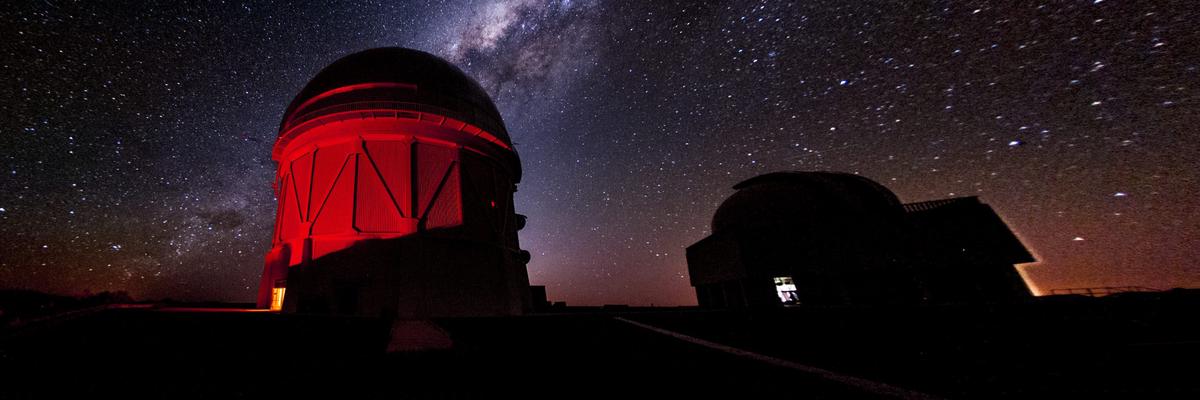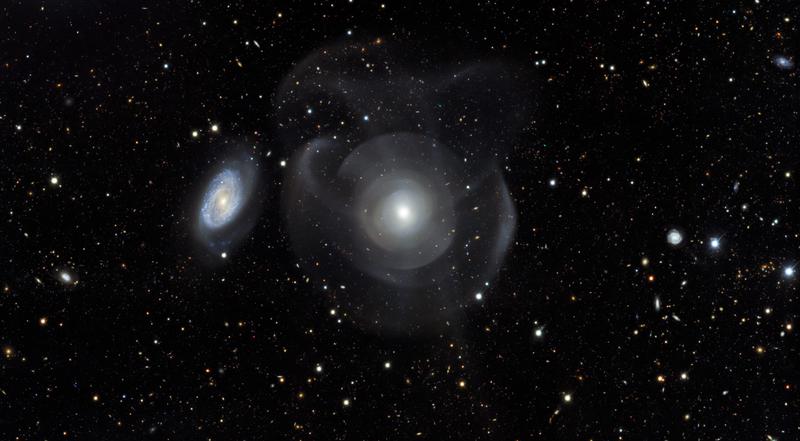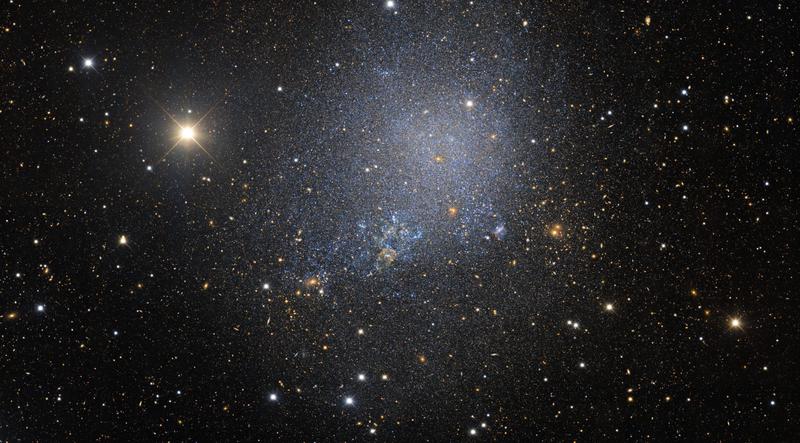Highlight
Dark Energy Survey makes public catalog of nearly 700 million astronomical objects
January 14, 2021

The Dark Energy Survey has released DR2, the second data release in the survey’s seven-year history, the culmination of over a half-decade of astronomical data collection and analysis with the ultimate goal of understanding the accelerating expansion of the universe and the phenomenon of dark energy, which is thought to be responsible for this accelerated expansion. It is one of the largest astronomical catalogs released to date.
Including a catalog of nearly 700 million astronomical objects, DR2 builds on the 400 million objects cataloged with the survey’s prior data release, or DR1, and also improves on it by refining calibration techniques, which, with the deeper combined images of DR2, lead to improved estimates of the amount and distribution of matter in the universe.
Astronomical researchers around the world can access these unprecedented data and mine them to make new discoveries about the universe, complementary to the studies being carried out by the Dark Energy Survey collaboration. The full data release is online and available to the public to explore and gain their own insights as well.

In Spain, several research groups have worked on various aspects of the project so that today we have this high-quality data set: instrumentation development, operations, data reduction and analysis software, since 2006, including CIEMAT, IEEC- ICE, IFAE and IFT.
“These catalogs and images are extremely rich for multiple astrophysical analyzes, of our galaxy and beyond. Furthermore, they have been subjected to intense scrutiny and verification in recent months to provide quality data to the scientific community” he says Aurelio Carnero Rosell, CIEMAT researcher during the development of DR2 and one of the principal investigators of this study.
Ignacio Sevilla Noarbe, another of the co-authors of the work, adds: “DES Data Release 2 is carried out through various interfaces, which include access to the catalogs through queries to databases and interactive browsers in the sky, in addition to online documentation on all its components. "
DES DR2 will be featured in a session of the American Astronomical Society meeting .
Dark Energy Survey: Precision Mapping of the Universe.
DES was designed to map hundreds of millions of galaxies and to discover thousands of supernovae in order to measure the history of cosmic expansion and the growth of large-scale structure in the universe, both of which reflect the nature and amount of dark energy in the universe. DES has produced the largest and most accurate dark matter map from galaxy weak lensing to date , as well as a new map, three times larger, that will be released in the near future.

One early result relates to the construction of a catalog of a type of pulsating star known as “RR Lyrae,” which tells scientists about the region of outer space beyond the edge of our Milky Way. In this area nearly devoid of stars, the motion of the RR Lyrae hint at the presence of an enormous “halo” of invisible dark matter , which may provide clues on how our galaxy was assembled over the last 12 billion years. In another result, DES scientists used the extensive DR2 galaxy catalog, along with data from the LIGO experiment, to estimate the location of a black hole merger and, independent of other techniques, infer the value of the Hubble constant , a key cosmological parameter. Combining their data with other surveys, DES scientists have also been able to generate a complete map of the Milky Way’s dwarf satellites, giving researchers insight into how our own galaxy was assembled and how it compares with cosmologists’ predictions.
Covering 5,000 square degrees of the southern sky (one-eighth of the entire sky) and spanning billions of light-years, the survey data enables many other investigations in addition to those targeting dark energy, covering a vast range of cosmic distances — from discovering new nearby solar system objects to investigating the nature of the first star-forming galaxies in the early universe.
“This is a momentous milestone. For six years, the Dark Energy Survey collaboration took pictures of distant celestial objects in the night sky. Now, after carefully checking the quality and calibration of the images captured by the Dark Energy Camera, we are releasing this second batch of data to the public,” said DES Director Rich Kron of Fermilab and the University of Chicago. “We invite professional and amateur scientists alike to dig into what we consider a rich mine of gems waiting to be discovered.”
- IFAE Research group
- Observational Cosmology Group
- Contact
